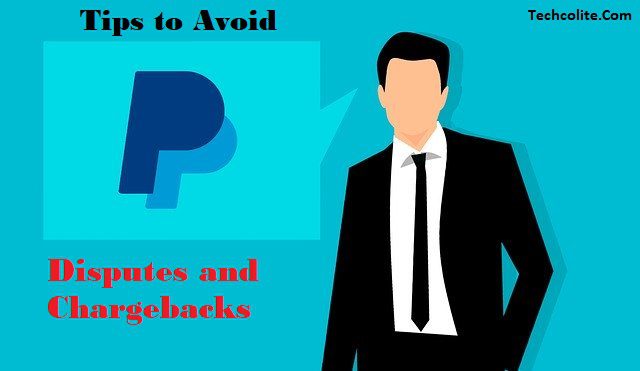
Today, PayPal is the most promising online gateway to make payments. It is the most preferred choice to make online payments. In 2019, the fourth quarter, a total amount of $199 billion was made at the gateway, adding 9.3 million new accounts. However, with an increased number of frauds and charge-backs, an individual might be at risk while accepting a legitimate amount through the gateway.
Although it is viewed as the most secure way for any transaction, there is a constant increase in deception charge-backs and assertions. In a typical scenario, an online purchase is made. The customer pays through PayPal using either his private PayPal account or credit card and simultaneously files a dispute with the credit card company, which results in a charge-back or with the resolution center of PayPal, which results in dispute and claim.
In most cases, the fraudster receives the money and the item, leaving the owner helpless. To understand the fraud, one must know the technique with which the fraudster files for a dispute.
What Is The Difference Between Charge-back And Claim?
A striking difference between charge-back and claim in PayPal is the party that resolves the fraudster’s dispute.
How PayPal Handle Charge-backs?
When a fraudster raises questions about the transaction made through the credit card, the credit card company notifies PayPal and requests a formal response. PayPal follows a three-step mechanism to respond to the credit card company.
- It notifies the seller, about the customer’s charge-back, and adds the notification on its Resolution Center.
- The seller needs to provide evidence as charge-back responds. The evidence includes communication between the seller and the customer or shipment details of the products. The details are to be uploaded within 10 days of charge-back notification.
- PayPal submits the evidence obtained from the seller to the credit card company for reviewing and making the final decision.
Suppose the credit card owner is determined not to be responsible for the transaction. In that case, the card company processes the charge-back, reversing the transaction amount by debiting from the seller’s account along with a fine of $20 as a charge-back fee. In case the company rules favor the seller, the customer is charged, and the funds are transferred into the seller’s account.
How PayPal Handle Disputes And Claims?
Suppose a customer raises a dispute regarding a transaction on the online Resolution Center of PayPal. If the dispute is not resolved within 20 days of raising, the customer can escalate the conflict to a claim for investigation by PayPal. If PayPal reverses the transaction, the seller has to refund the amount and even the customer’s merchandise.
The seller can defend themselves against the claim by providing necessary information about the transaction like shipment receipt, delivery proof, tracking number, and signature confirmation. Many sellers feel that PayPal resolutions are biased and favor customers.
They get away with the money and the product, and the only way to avoid it is to prove otherwise that the seller received the product from the customer. Still, it was not in the same condition when dispatched to the customer, or the wrong item was returned, or the seller received an empty box without the item.
To avoid the hassle of charge-backs and claims following are some simple suggestions for the sellers.
- Meet The Requirements Of Seller Protection Set By PayPal:
PurchaseProtection Program specially designed by PayPal protects the seller from fraud online sale, minimizes the charge-back, and claims. The merchants can retain the full amount and refrain from charge-back fees if they meet all the program requirements.
- Refrain From Doing Risky Transactions:
High-risk transactions like selling high tech equipment, investment in crowdfunding through PayPal should be made with caution as all sales are not protected. PayPal does not protect sellers when a transaction involves gift cards. A fraudster can purchase gift cards from merchants through PayPal and claim against the sale. Sellers do not have any recourse as the deal is not covered.
- Shrink Transactions Claiming To Be Unauthorized:
Customers claim unofficial transaction disputes when they believe that their PayPal account is being used without permission. Customers have 60 days from the date of the transaction to report. To avoid the pitfall, the merchants can implement extra security measures like confirmation of customer details and items at the shipment time.
They should communicate business names that will appear on the PayPal invoice, proof of delivery like delivery date, status. The address should be maintained. Multiple request orders should be questioned before a purchase is made. Customers with suspicious email ids like tos67re&&[email protected] should be thoroughly investigated.
- Shrink The “Items Not Obtained” Claims:
Fraud customers can claim not to receive the purchased items. To avoid such claims, sellers can set a precise date of delivery, update the customer about the shipment, track delivery status, not use the customer delivery service, and purchase shipping insurance to cover fragile and expensive items.
- Refrain From “Not Described Significantly” Claims:
Customers often claim that the product is not the same as ordered. Such claims are not covered under Seller Protection Program by PayPal. In such cases, the sellers can include a detailed description like measurements of the product. Refer to this page by PrizeHog for a more detailed look.
They can have multiple pictures of the product taken from different angles, any damage or defect should be mentioned previously, shipment tracking mechanism should be provided to the customer, pictures of the product, and satisfactorily answer all the customer’s queries. The sellers should also inform the customers about the company policies and working hours to avoid confusion in the later stages.
Even after effectively implementing the prevention strategies, the seller often finds themselves at the losing end. Any loss to the claim under the Purchase Protection Program may affect the company’s reputation and its ability to perform future business with PayPal. With the rise in the number of frauds, the sellers must employ dynamic solutions to reduce claims and chargebacks.
